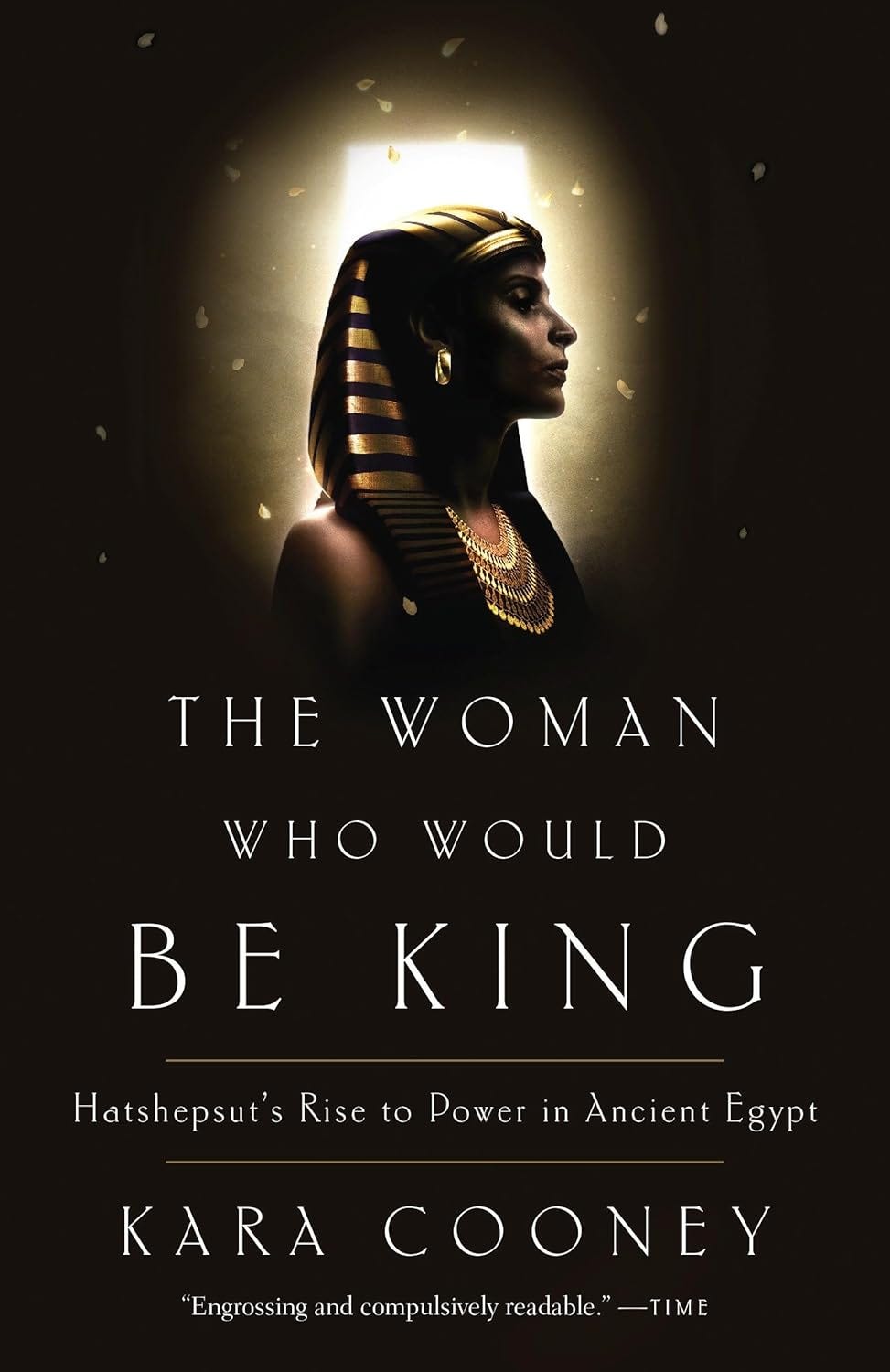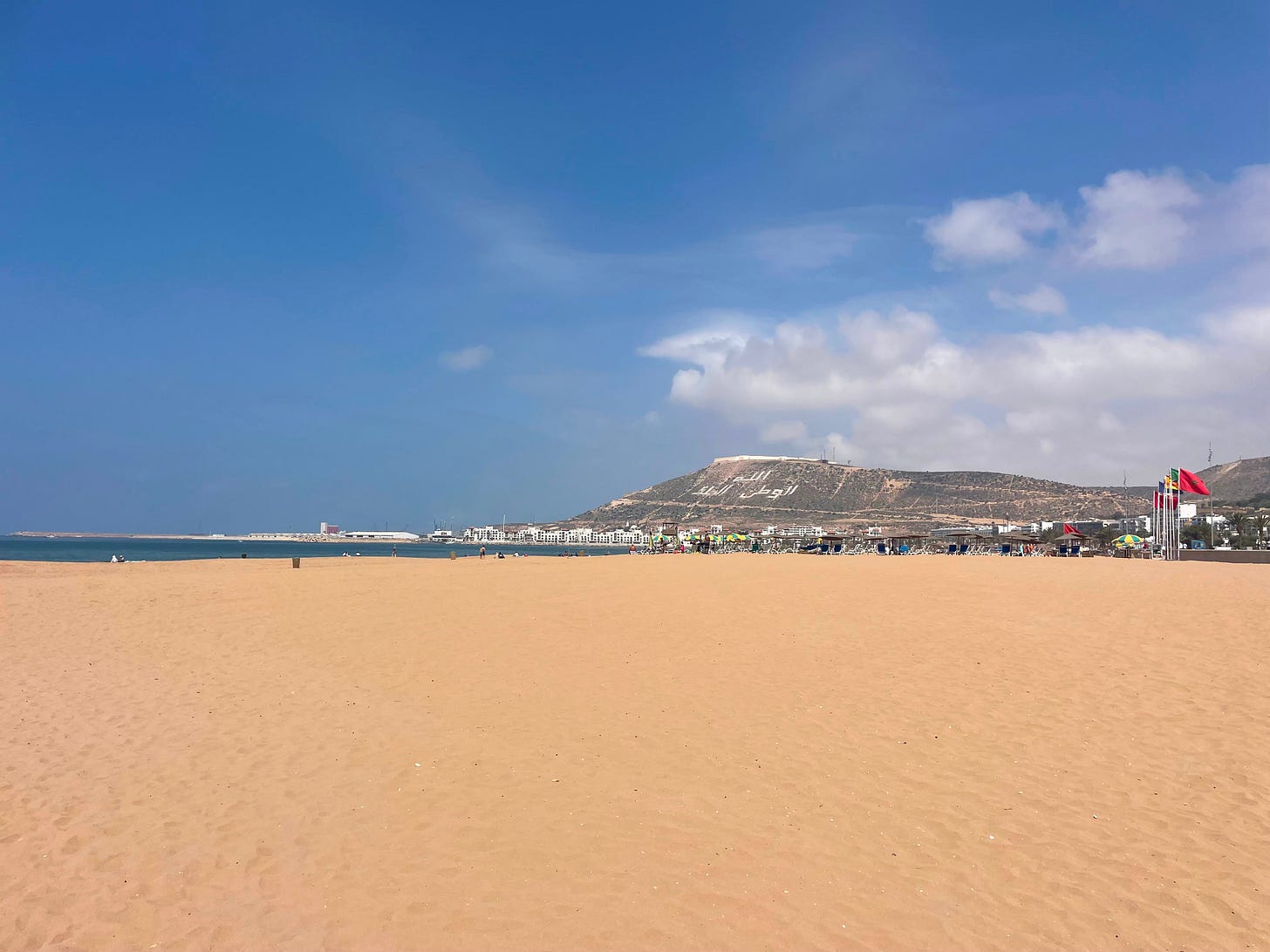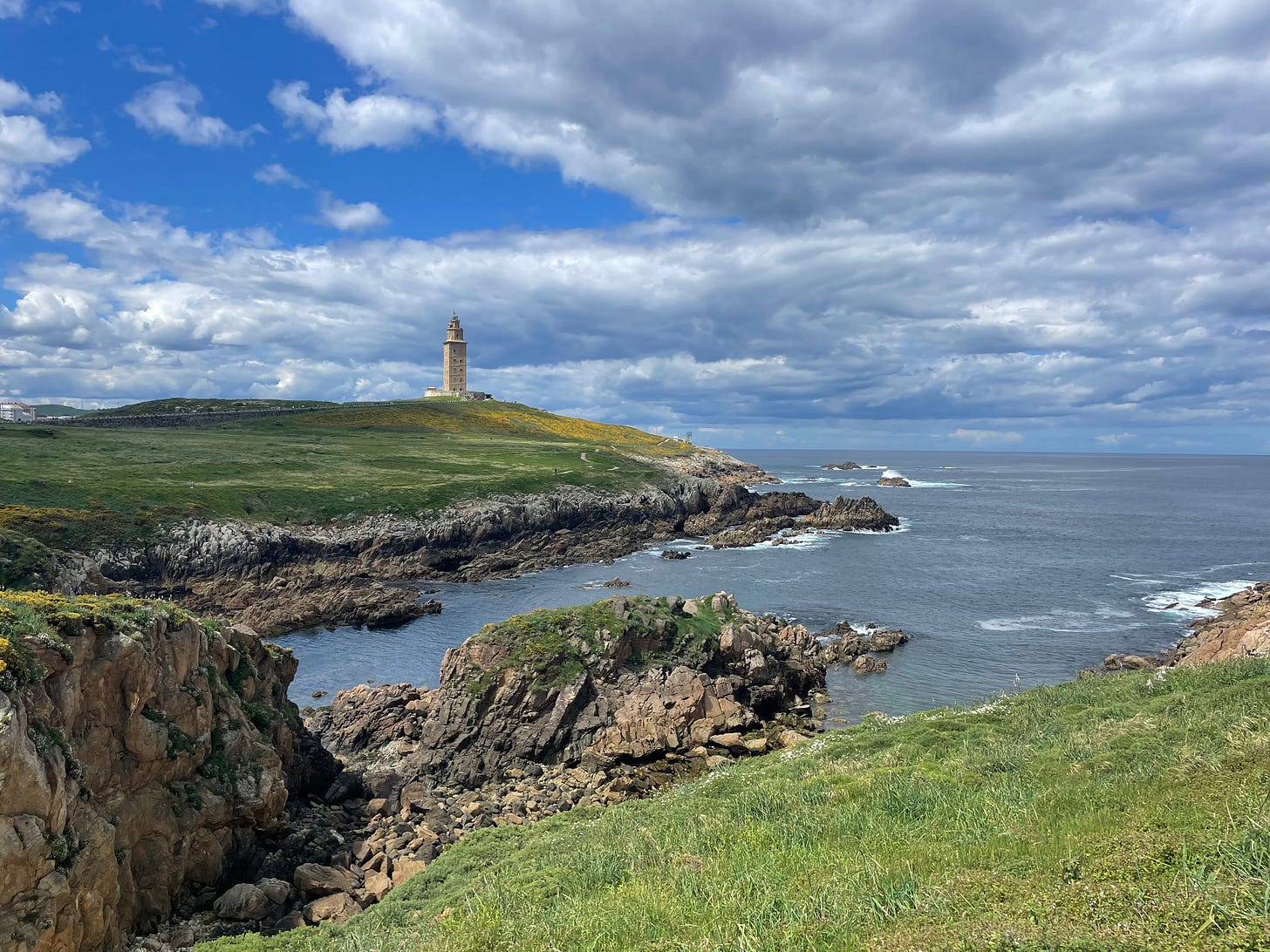Separating Academic and Trade Writing
I spent most of the Spring sailing around the world on a Viking cruise ship (yes, it was awesome). I got to play historian, which makes me happy (“play” here being self-deprecating… I worked hard for that Ph.D.). While I'm usually in Europe with Viking - what with my background in British and Roman Empires - on this particular route, I finally had the chance to go to countries in Africa. I joke that because my PhD involves the British Empire, I can speak on something relevant almost everywhere. That was very much the case this time: so much theft, enslavement, and appropriation to cover in just a few short weeks!
My overall task: introduce Africa to a largely American audience (typically) uninformed about Africa beyond ancient Egypt and name-checking Mandela (book recommendation: Africa is Not a Country by Dipo Faloyin).1
I wanted to make a bigger point that the first door you open into new histories doesn't have to be, yet again, a story of “the Great Men of History.” Inspired by the fabulous work of Nwando Achebe, I wanted to introduce what she calls the lions of history: the queens from various countries and times across the African continent.
To do this, I needed to avoid the obvious.
If I say “African Queen,” I bet you just thought of either Cleopatra or the Bogart and Hepburn movie.
That’s okay. You’re not alone.
I chose Hatshepsut over Cleopatra. I shared the stories of inspiring leaders like Ahebi Ugbabe and Yaa Asantewaa. In my research, I relied on scholarly work and public-facing histories. Kara Cooney is my absolute hero (I want to be her when I grow up), so, of course, I relied heavily on her biography, The Woman Who Would Be King: Hatshepsut’s Rise to Power in Ancient Egypt, for that part of the talk. On the other hand, for someone like Njinga of Angola, the published work is scholarly. Linda Heywood's book, Njinga of Angola: Africa's Warrior Queen, is fantastic - I couldn’t put it down - but it’s not necessarily geared towards the general reader.
Cooney and Heywood - both advanced and highly respected scholars - were writing for two different audiences. Cooney published with Crown, a subsidiary of Penguin Random House, while Heywood published with Harvard University Press. Both excellent presses for excellent academics, but with profoundly different focuses, readerships, marketing goals, and access.
A little over 50% of the writers I coach and edit come from the academic world. And of those, most are trying to write academic work for non-academic audiences. The rest are typically working on books destined for university presses, but with a dream that the books will be accessible enough to draw in general readership anyway.
My other 50% - my badass business leaders - these ladies are usually trying to write leadership books based on niche business experience, but targeting readerships who might not come from the same background, experience the same corporate culture, or use the same jargon.
In light of these “translation” challenges, I wanted to talk about how Cooney and Heywood are great examples of how books doing roughly the same thing can effectively do so for two very different audiences.
Cooney’s Preface is a quick overview and a CTA on the challenges (and importance) of writing a woman (back) into history. It works as a position statement for both her academic and general readers. She also includes the kind of map of Egypt you might see at the start of a novel, rather than an academic text.
She opens Chapter 1 with a scene straight out of Hollywood. Yes, it’s fictional, but she makes a strong case for why we need to trust her and her context to construct the full story. She starts with this scene of Hatshepsut in the temple to introduce how she will balance the entire book - letting the lush imaginary float on top of (as it were) her deep research and knowledge.
Cooney uses comfortable, conversational language rather than technical phraseology to confidently reference her sources, from papyri to temple decorations. She uses phrases like “we can imagine…” to open up descriptions of locations, ceremonies, and other spaces where we know Hatshepsut walked, even if we have no specific historical record of a particular moment or event. She points out where Egyptologists get stuck in the sources, and reveals how she chose to work through those challenges, building reader trust and author authority through transparency and honesty.
We’re in the room with Hatshepsut giving birth, with her as she communes with Amen, and with her daughter, Nefrure, as she oversees her mother’s mummification. These intimate moments allow Cooney to craft a fuller biography than academic publishing constraints may have allowed, and they importantly allow her to bring Hatshepsut’s story to readers of all backgrounds, not just scholars.
Heywood, on the other hand, maps out her fast-paced biography in gorgeous, densely-endnoted chapters. While her approach is also chronological, her linguistic choices reflect her academic audience: terms are fully backstopped, records meticulously detailed, and events substantiated across multiple sources in both the text and in the notes. She relies heavily on the wealth of letters and legislation relating to imperial powers in 17th-century West Africa. She also knows her readers want to analyze those texts for themselves, so she includes frequent and lengthy source material directly in the chapters.
Where Cooney’s casual language choices convey a sense that she thinks her subject is generally badass and understandably overlooked, Heywood’s commitment to academic precision gives the impression that she has both a deep passion for her subject and seeming incredulity that Njinga has been overlooked.
Heywood, in each progressive chapter, proves her professional bona fides by proving she has done the research, cross-referencing every scene and contextualizing every moment with primary text. The end result is no less exciting of a story, but the pacing of it reflects that internal academic paranoia that “you never know who might be reading, so you have to make sure you’ve accounted for all of them.”
Should you read them? If you love discovering new women in history, absolutely! And even if you’re not a scholar, don’t shy away from Heywood. Njinga’s story and Heywood’s clear love for it are worth some denser sections. Also, I suspect Heywood’s publishers recognized this. Blurbs on the back cover include Henry Louis Gates, Jr., and Ta-Nehisi Coates.
If you read them, you’ll get to see how two women deftly handle important biographies, but with different goals for different readers. Both are excellent. There isn’t a right or wrong way.
It’s why the first big question I have for every writer I work with is: who is your reader? You unlock that, you unlock your entire book!
Where do I start looking for publishers?
One of the biggest hurdles to getting published is just getting started looking for the right fit for you and your book. I talk to so many writers who are intimidated by this process, and I think it’s actually one of the most fun things to do (especially when procrastinating something else about your book 😉) And since most university and many business presses don’t require an agent, it’s time to start perusing your bookshelves!
Publishers
Look on the spines (or on your kindle) of books you think are like the book you want to write/are writing.
Make a list (message me if you want an excel template - happy to share)
Research each publisher’s website. Does it look like they still publish the kind of thing you are writing?
If so, look for either a “contact” or “submission” or “for authors” button to see how they accept submissions. They should indicate whether they only accept submissions from agents, or if they are open to unagented submissions.
If you can submit directly (without an agent), note this in your chart.
If there are directions for how to submit, add/link that to your chart.
Congratulations! You’ve started your list!
My advice is roughly similar for agents, although the starting point would be the acknowledgments in the back of the book, rather than the publisher on the spine. If an author wrote a book in your lane and thanks their agent, research that agent. Find out if they’re open to submissions, what they’re looking for right now, and what their process is.
Home for the Summer
Last month, I finally came home after over a month at sea. It was full of history, adventure, and wonderful new cities. And while looking at home advertisements when I travel is always a fun hobby, I can’t think of a trip where I spent more time going, “Oh, no, THIS is where I want to live!”
A few spectacular options:
Porto, Portugal - It’s like Philadelphia, if Philadelphia were an amazing, historic European seaside treasure full of port cellars, amazing food and wine, and a wildly un-Philadelphia-like sense of relaxation. (I don’t think they throw snowballs at Santa here 😉)
A Coruña, Spain - This might be the one for me. Take an amazing, vibrant seaside town in Scotland… and park it in Northern Spain. You get the wild Atlantic coast and amazing coastal hiking, but with blue Spanish skies and gorgeous Spanish weather. Oh, and lots and lots of fabulous food and wine (see the theme?)
Honfleur, France - Normandy is just amazing, but Honfleur was perfect - a little touristy but very local and right in the middle of everything. The bonus was looking at a real estate flyer for an amazing house in our price range and then tripping across it a few blocks away. The idea of fresh French bread every morning… if that’s not perfection, I don’t know what is.
How Writing is like a Spinning Class
The next edition of Nevertheless, she published brings together two things I love to coach but hate to do on my own: writing and riding.
There’s a lot to be learned from your Spinning or Peloton to inform and empower your writing practice. Stay tuned.
Book links to bookshop.org are affiliate links. Should you choose to buy any of these fabulous books from them, you’re not only supporting independent bookstores, you’re also sending a few cents my way as well.














I'm currently focussing on getting an academic book over the line while also not letting a more public-facing one from the same project go off the boil (to shamelessly blend metaphors into an incredibly dangerous 'boiling egg race' to add risk to the school sports day). Thanks for a great, and inspiring, reflection on the hows but also a reminder that both have their place and can be fun to read!